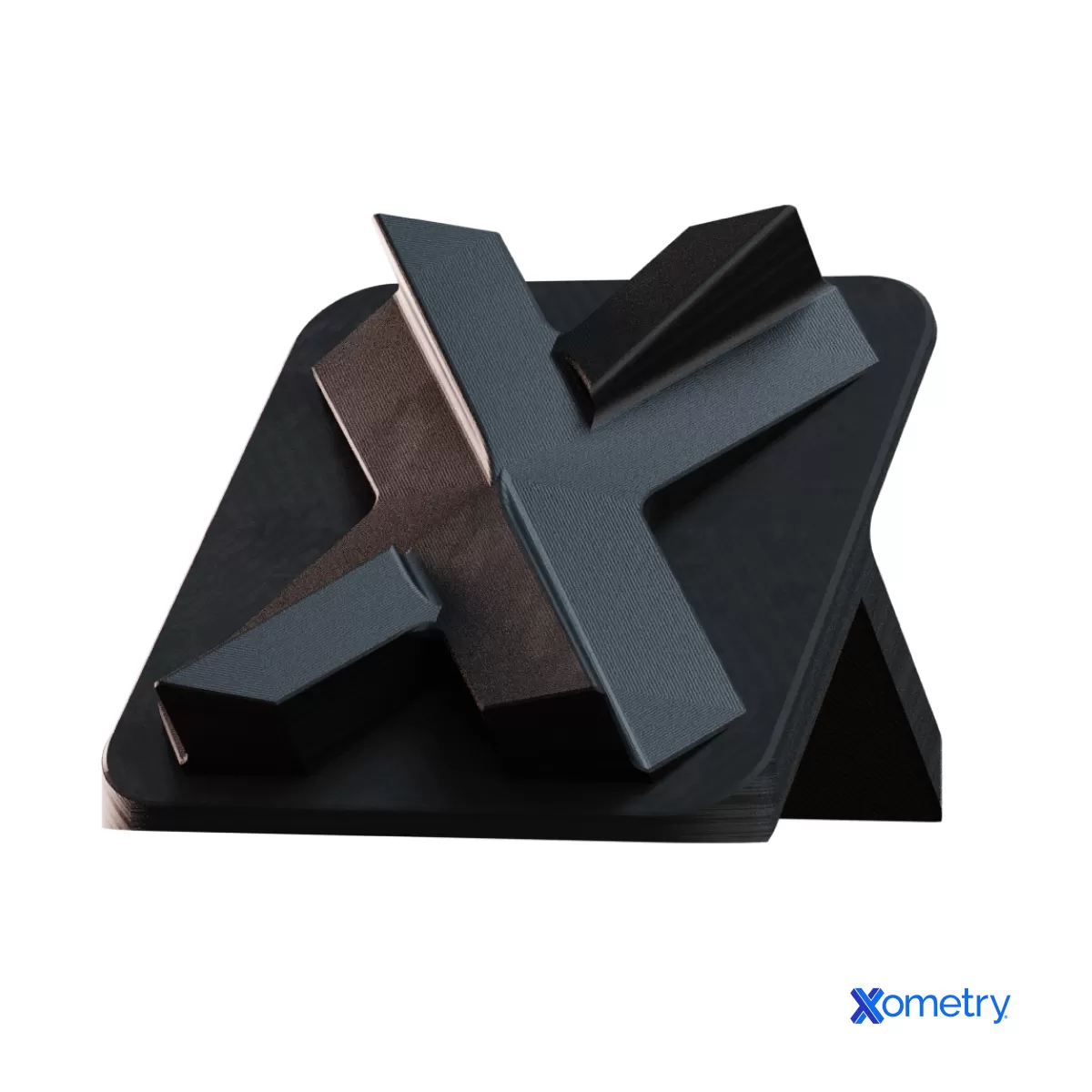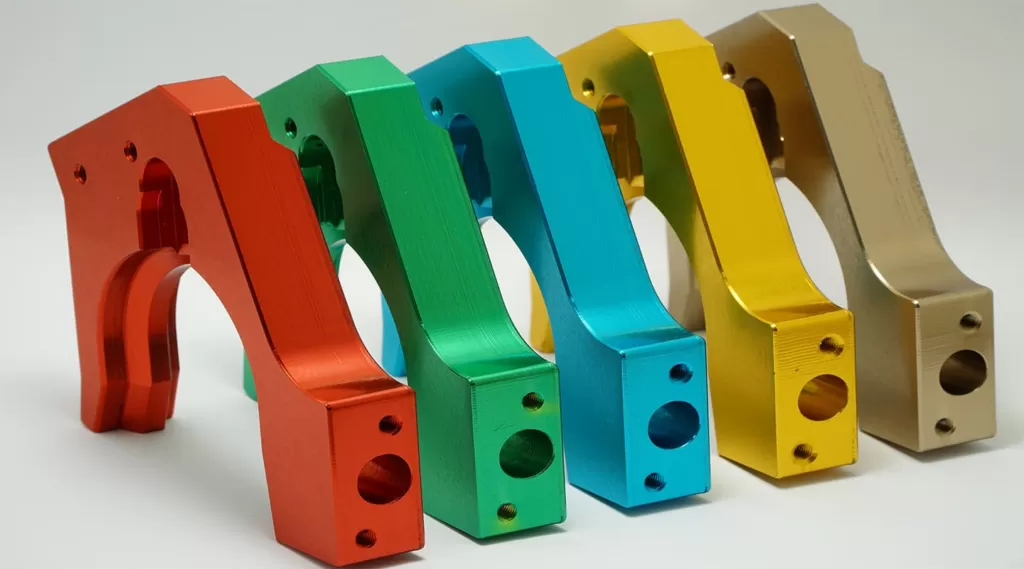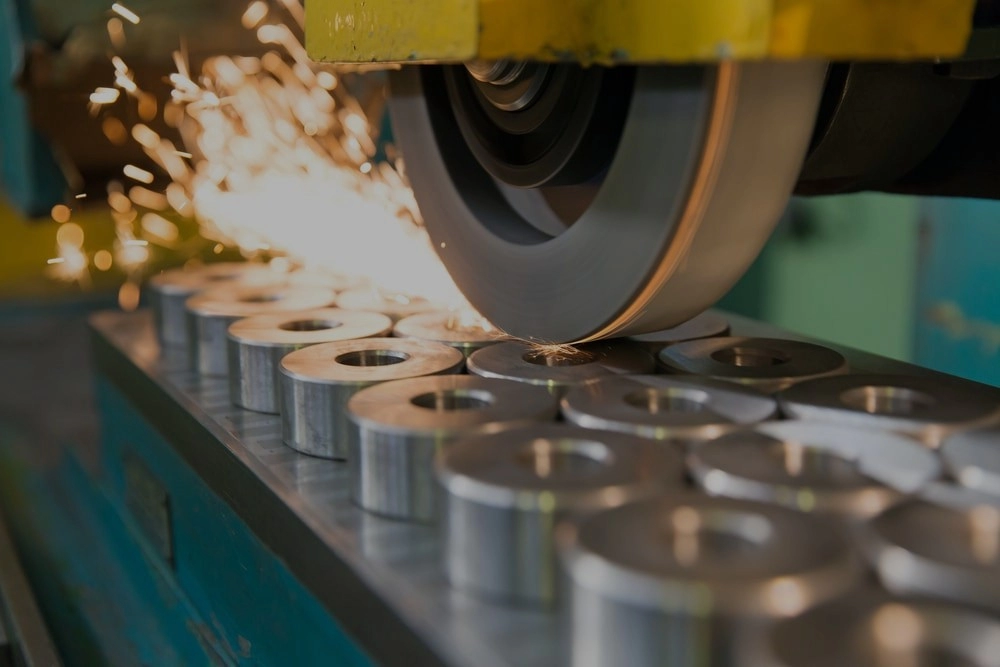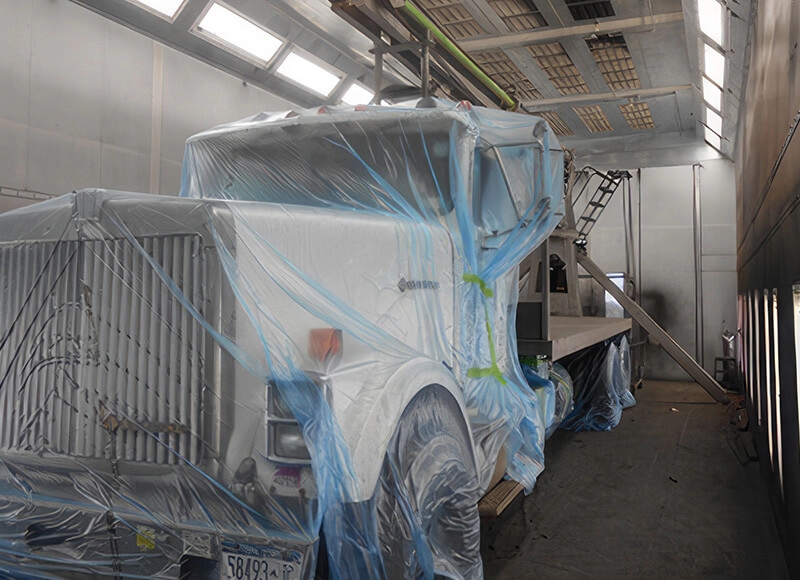Are you searching for the perfect black oxide finish to elevate your CNC machined parts? Choosing the right metal finishing services can transform the durability, aesthetics, and performance of your components. At HYCNC, we’ve mastered the art of delivering top-notch black oxide coatings based on years of real industry experience in precision machining. A black oxide finish not only protects against corrosion but also delivers a sleek, professional look for your tools, fasteners, and more. In this guide, you’ll uncover the secrets of the black oxide process, its benefits, and how HYCNC can bring unmatched quality to your projects. Let’s dive in!
What is Black Oxide Finish Definition Chemical Reaction and Types
A black oxide finish is a popular surface treatment used primarily on ferrous metals like steel and iron. It involves a chemical reaction that converts the metal surface into a thin, black, protective layer called magnetite (Fe3O4). This finish is not a coating like paint or plating but a conversion of the metal surface itself, which makes it highly durable and corrosion-resistant.
The Chemical Reaction Behind Black Oxide Coating
Black oxide is created through a controlled oxidation process that involves submerging the metal parts in an alkaline hot salt bath. During this process, a chemical reaction occurs:
- The metal surface reacts with the oxidizing salts.
- The iron reacts to form a layer of magnetite (Fe3O4) on the surface.
- This oxide layer gives the metal a uniform matte black finish.
This reaction enhances the metal’s corrosion resistance without significantly affecting its dimensions or mechanical properties—ideal for precision parts like those produced by CNC machining.
Types of Black Oxide Finish
There are several types of black oxide processes, each suited for specific materials and applications:
- Hot Black Oxide – Performed at high temperatures (around 285°F), typically used on carbon steel and alloy steel. It produces a hard, durable finish.
- Cold Black Oxide – Applied at room temperature, suitable for smaller parts or those sensitive to heat.
- Copper or Brass Black Oxide – Adapted for non-ferrous metals like copper, brass, and bronze.
- Sodium Sulfide Black Oxide – Common for cast iron parts, providing good corrosion resistance.
Each type offers distinct benefits depending on the metallurgical composition of your CNC machined parts and operational requirements.
The black oxide coating provides an exceptional combination of protection and aesthetic appeal without adding bulk. For a deeper dive into surface finishes and how they impact CNC machined parts, check out our guide on good surface finish for CNC machined parts.
Understanding the fundamentals of black oxide finish helps you make informed decisions on selecting the best surface treatment for your next CNC project.
Benefits of Black Oxide Finish for CNC Machined Parts
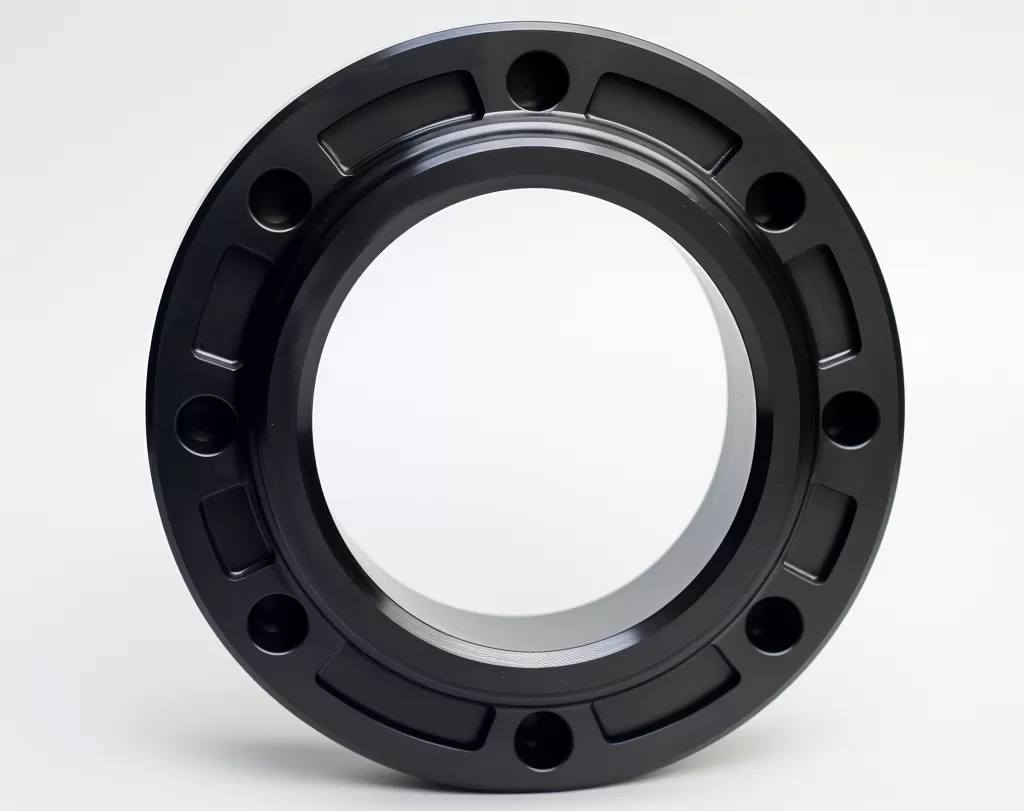
When it comes to CNC machined parts, choosing the right surface treatment is crucial. A black oxide finish offers several strong benefits that make it a popular choice for manufacturers and end users alike.
Corrosion Resistance
One of the biggest advantages of the black oxide coating is its ability to resist rust and corrosion. While it doesn’t provide a thick barrier like paint or plating, it forms a protective layer that slows down oxidation, especially when combined with oil or wax coatings. This helps extend the life of ferrous metal parts used in harsh environments.
Minimal Dimensional Impact
Unlike some finishes that add thickness, the black oxide process changes the metal’s surface chemically rather than physically adding a layer. This means it won’t affect the tight tolerances required in precision CNC machining. Parts stay within spec after finishing.
Enhanced Aesthetic Appeal
The matte black finish gives parts a sleek, uniform look. This surface treatment for tools and components not only improves the visual appeal but also reduces glare and reflection — useful in industries like aerospace or automotive where attention to detail matters.
Controls Light Reflection
Black oxide reduces surface light reflection on metal parts, which is great for optical applications, firearms, and high-precision instruments. This helps prevent unwanted glare and improves visual clarity.
Improved Lubricity
The finish increases the surface lubricity by creating a smoother, micro-porous layer. This means less friction between moving parts and often better wear resistance, which is valuable in mechanical assemblies using black oxide fasteners.
Cost Effectiveness
Compared to other metal finishing services like plating or anodizing, the black oxide finish is cost-effective. It requires less equipment, less energy, and no heavy metals, making it a budget-friendly option without sacrificing quality.
In , the black oxide coating delivers a solid combination of rust protection, minimal dimensional change, attractive appearance, reduced glare, better lubrication, and cost savings—all important benefits for precision CNC machined parts.
Applications of Black Oxide Finish in CNC Machining
When it comes to CNC machined parts, the black oxide finish stands out for its versatility across industries. This finish not only improves the appearance but also adds functional benefits, making it a popular choice in various sectors.
Industries Using Black Oxide Finish
-
Automotive
Black oxide coating helps protect engine components and fasteners from corrosion while reducing glare and reflection inside the engine bay.
-
Aerospace
Precision parts benefit from the corrosion-resistant and low-friction surface treatment, ensuring reliability in demanding environments.
-
Defense and Firearms
The matte black finish provides tactical advantages by minimizing reflections, and the coating improves wear resistance on metal fasteners and tools.
-
Manufacturing and Tooling
Black oxide enhances the durability and lubricity of CNC machined tools and dies, reducing friction and extending tool life.
Common Use Cases
- Fasteners and Screws: Black oxide is widely used on metal fasteners to prevent rust and improve aesthetic appeal without adding bulk.
- Gears and Shafts: The corrosion resistance and slight lubricity help these moving parts perform better over time.
- Precision Components: The finish maintains tight dimensional tolerances while offering added surface protection.
- Hand Tools and Blades: A black oxide finish reduces glare and helps tools resist surface wear in rough working conditions.
Real-World Benefits for CNC Machined Parts
- Corrosion Resistance: Prevents rust early on during long-term use.
- Dimensional Stability: The thin coating does not affect tight machining tolerances.
- Aesthetic Appeal: Provides a consistent matte black surface that looks professional.
- Improved Lubricity: Reduces friction on moving parts, enhancing performance.
- Cost-Effective Protection: A budget-friendly solution compared to plating or anodizing.
Interested in learning more about surface treatments for CNC machined parts? Check out our detailed guide on good surface finish for CNC machined parts to see how different finishes compare.
In short, the black oxide finish is a practical and reliable choice across many CNC applications, especially when surface protection and appearance matter.
The Black Oxide Coating Process with HYCNC

When you choose HYCNC for black oxide coating, you get a precise and reliable surface treatment tailored for CNC machined parts. Here’s how we ensure top quality every time.
Step-by-Step Black Oxide Process
-
Material Selection
We start by selecting ferrous metals suitable for black oxide coating, such as steel and iron parts commonly used in CNC machining. This ensures the finish bonds well for durability.
-
Cleaning and Preparation
Before coating, parts are thoroughly cleaned to remove oils, dirt, and rust. This step is crucial for achieving a strong, uniform black oxide finish.
-
Black Oxide Coating
The parts undergo a controlled chemical bath where a chemical reaction forms a black oxide layer on the surface. This matte black finish enhances corrosion resistance and helps with light reflection.
-
Rinsing and Drying
After the coating, parts are rinsed with water and carefully dried to lock in the finish and prepare them for any further treatments.
-
Post-Treatment (Optional)
Depending on your project needs, we add a light oil or wax coating to improve lubricity and further protect against rust.
Quality Control at HYCNC
-
Consistent Thickness and Coverage
We inspect each batch of parts for uniformity and proper finish thickness to meet your exact CNC machining specifications.
-
Durability Testing
Our team runs corrosion and adhesion tests to ensure the black oxide coating will stand up to real-world use.
Customization Options for Your CNC Project
- Choose from different black oxide types depending on desired corrosion resistance and surface texture.
- We tailor the coating thickness and finish style to suit the function and look you want.
- Our team works closely with you to match specific metal finishing requirements, keeping your parts within tight tolerances.
When it comes to black oxide coating, HYCNC combines experienced craftsmanship with state-of-the-art facilities for consistent, high-quality results. Whether you’re finishing precision-machined parts or tools, our process enhances your components, making them more durable and visually appealing.
Advantages and Limitations of Black Oxide Finish for CNC Machined Parts
Advantages of Black Oxide Finish
Durability
Black oxide finish provides a tough, corrosion-resistant layer that helps protect CNC machined parts from rust and wear. While it’s not a full protective coating like paint or plating, it significantly extends the life of ferrous metal components.
Low Cost
Compared to other metal finishing services like plating or anodizing, black oxide coating is very cost-effective. The process uses fewer materials and less energy, making it a budget-friendly option for large or small production runs.
Eco-Friendly
The black oxide process is more environmentally friendly than many finishing methods because it uses fewer hazardous chemicals and generates less waste. This is a big plus for manufacturers aiming to reduce their environmental footprint.
Improved Aesthetics and Functionality
Black oxide finish gives parts a matte black appearance that reduces glare and hides surface imperfections. It also improves light reflection control and adds mild lubricity, which is great for fasteners and moving parts.
Limitations of Black Oxide Finish and Solutions
Not Fully Waterproof
While it offers good corrosion resistance, black oxide finish doesn’t completely seal the surface against moisture. This means parts may still need a topcoat of oil or wax for outdoor or harsh environment use.
Limited to Ferrous Metals
Black oxide coating mainly works on steel, iron, and other ferrous metals. It’s not suitable for aluminum, stainless steel, or non-ferrous metals without special treatment, which could add cost.
Thin Coating Layer
The layer created by the black oxide process is ultra-thin, so it won’t add significant thickness or change part dimensions—great for precision parts but less effective if heavy surface protection is needed.
Care and Maintenance
Black oxide surfaces need periodic oiling to maintain corrosion resistance. Parts exposed to wear or weather may require regular inspection and maintenance to keep their finish intact.
For more details on surface finishes that enhance CNC machined parts, check our guide on good surface finish for CNC machined parts. Also, learn about other finishing options in our surface finishing services page.
How to Choose the Right Black Oxide Finish for Your CNC Project
Selecting the right black oxide finish for your CNC machined parts can make a big difference in performance, appearance, and cost. Here’s what you need to keep in mind:
Factors to Consider for Black Oxide Coating
-
Material Type
Black oxide works best on ferrous metals like steel and iron. Make sure your CNC parts are compatible for this surface treatment.
-
Corrosion Resistance Needs
Depending on the environment, you may need enhanced corrosion protection. Some black oxide options include additional oil or sealant coatings for better durability.
-
Dimensional Impact
Black oxide adds an extremely thin finish (usually under 1 micron), so it won’t alter tight tolerances on your precision-machined parts.
-
Aesthetic Preferences
Decide if you want a matte black finish or a slightly glossy look. Different processes and post-treatments can adjust the surface appearance.
-
Budget
Black oxide is cost-effective, but certain types or added sealants can change pricing. Know your budget upfront.
Types of Black Oxide Finishes for CNC Parts
-
Hot Black Oxide
The most common process, offering good corrosion resistance and uniform color on steel.
-
Cold Black Oxide
Performed at room temperature and used when heat treatment is not an option. Best for small runs or complex shapes.
-
Satin or Matte Finish Options
Controlled process variables or buffing allow you to select different surface textures.
Consultation and Customization
Don’t hesitate to talk with your metal finishing service provider—like us at HYCNC—to find the right black oxide process. We’ll review your project specs and suggest the ideal finish based on your part geometry, usage, and environment.
Maintenance Tips for Black Oxide Coated CNC Parts
-
Keep the parts dry
Although black oxide improves corrosion resistance, avoid prolonged moisture exposure.
-
Use light oil coatings
Applying oil post-coating can extend the life of the finish.
-
Regular inspections
Check for wear or damage, especially if parts are in harsh environments.
By considering these points, you’ll ensure your CNC machined parts get the right black oxide finish, balancing durability, cost, and appearance perfectly for your project.
Why Choose HYCNC for Black Oxide Coating Services
When it comes to black oxide finish for CNC machined parts, HYCNC stands out for several solid reasons. Whether you’re looking for corrosion-resistant coatings, precision machining finishes, or just a reliable metal finishing service, here’s why HYCNC is a smart choice.
Proven Expertise and Quality
Our team at HYCNC has years of experience in applying high-quality black oxide coatings specifically tailored for CNC parts. We understand the nuances of the black oxide process and how to handle different metals, ensuring you get a consistent matte black finish that holds up well in real-world use.
- Skilled technicians familiar with ferrous metal coatings
- Ability to work with a variety of CNC machined materials
- Strict quality control to keep every piece within tight tolerances
Fast Turnaround Times
We know that in manufacturing, time is money. That’s why HYCNC prioritizes quick delivery without sacrificing quality. Whether you have a small batch or a larger order, we keep the process smooth and efficient, helping you stick to your project schedule.
Certified and Reliable Services
HYCNC follows industry standards and holds certifications that guarantee the quality and safety of our black oxide coating services. These certifications back up our commitment to durability, corrosion resistance, and environmentally responsible practices.
Real Results Backed by Case Studies
We don’t just talk about quality — we prove it. Numerous project case studies demonstrate how our black oxide coatings boost wear resistance and extend the life of CNC machined parts across different industries. From automotive components to industrial tools, our finish makes a difference.
Customized Solutions to Fit Your Needs
No two CNC projects are the same. HYCNC offers customization options based on your material, part size, and performance requirements. We help you choose the right type of black oxide finish that fits your budget and application.
Ready to Get Started
If you need a reliable black oxide coating service for your next CNC machining project, HYCNC is here to help. Contact us for a consultation, and let’s discuss how we can improve your parts with a superior black oxide finish.
- Expert advice tailored to your project
- Competitive pricing and turnaround
- Quality you can count on every time
Choose HYCNC for your black oxide coating needs and experience a smoother, stronger, and more corrosion-resistant finish that stands up to your toughest challenges.
FAQs About Black Oxide Finish for CNC Machined Parts
What metals can be coated with black oxide finish
Black oxide works best on ferrous metals like steel, iron, and stainless steel. It’s not suitable for non-ferrous metals such as aluminum or copper. If you need a corrosion-resistant coating on those, other finishes are better.
How does black oxide compare to other coatings
Compared to paints or plating, black oxide offers a thin, durable, and matte black finish that won’t peel or chip. It provides moderate corrosion resistance but usually needs an additional oil or wax layer. It’s more cost-effective and eco-friendly than chrome or nickel plating.
What is the environmental impact of black oxide coating
The black oxide process uses chemical baths that require proper disposal. However, it is considered more environmentally friendly compared to heavy metal plating because it uses fewer toxic materials and creates less hazardous waste.
How durable is the black oxide finish
Black oxide finish provides good wear resistance and corrosion protection when combined with oil treatment. It’s great for tools and fasteners, but if extreme corrosion resistance is needed, other coatings like zinc plating might be better.
Does HYCNC offer small-batch black oxide services
Yes, HYCNC can handle both small and large batch orders efficiently. This makes it a good choice for prototypes, custom projects, or ongoing production runs.
Can black oxide finish improve my CNC machined parts
Absolutely. It adds a uniform black matte surface that improves aesthetics, reduces glare, and helps resist rust—all while keeping tight tolerances and part dimensions intact.
If you have more questions about black oxide coatings or want advice tailored to your CNC project, reach out to HYCNC’s experts. We’re here to help you get the perfect finish every time.

